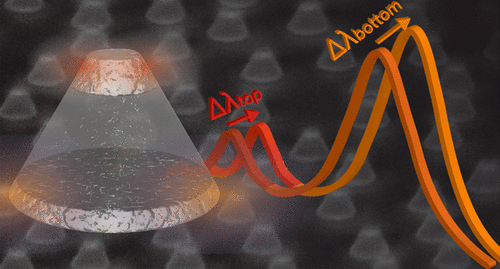
Plasmonic Metasurface for Spatially Resolved Optical Sensing in Three Dimensions
AUTHORS:
Nugroho F.A.A., Albinsson D., Antosiewicz T.J., Langhammer C.
ABSTRACT:

The highly localized sensitivity of metallic nanoparticles sustaining localized surface plasmon resonance (LSPR) enables detection of minute events occurring close to the particle surface and forms the basis for nanoplasmonic sensing. To date, nanoplasmonic sensors typically consist of two-dimensional (2D) nanoparticle arrays and can therefore only probe processes that occur within the array plane, leaving unaddressed the potential of sensing in three dimensions (3D). Here, we present a plasmonic metasurface comprising arrays of stacked Ag nanodisks separated by a thick SiO2 dielectric layer, which, through rational design, exhibit two distinct and spectrally separated LSPR sensing peaks and corresponding spatially separated sensing locations in the axial direction. This arrangement thus enables real-time plasmonic sensing in 3D. As a proof-of-principle, we successfully determine in a single experiment the layer-specific glass transition temperatures of a bilayer polymer thin film of poly(methyl methacrylate), PMMA, and poly(methyl methacrylate)/poly(methacrylic acid), P(MMA-MAA). Our work thus demonstrates a strategy for nanoplasmonic sensor design and utilization to simultaneously probe local chemical or physical processes at spatially different locations. In a wider perspective, it stimulates further development of sensors that employ multiple detection elements to generate distinct and spectrally individually addressable LSPR modes.
ACS Nano, 2020, vol. 14(2), pp. 2345-2353, doi: 10.1021/acsnano.9b09508
Opublikowano dnia - 27 lutego 2020 14:33
Ostatnia zmiana - 27 lutego 2020 15:05
Publikujący - Sekretariat IGF
